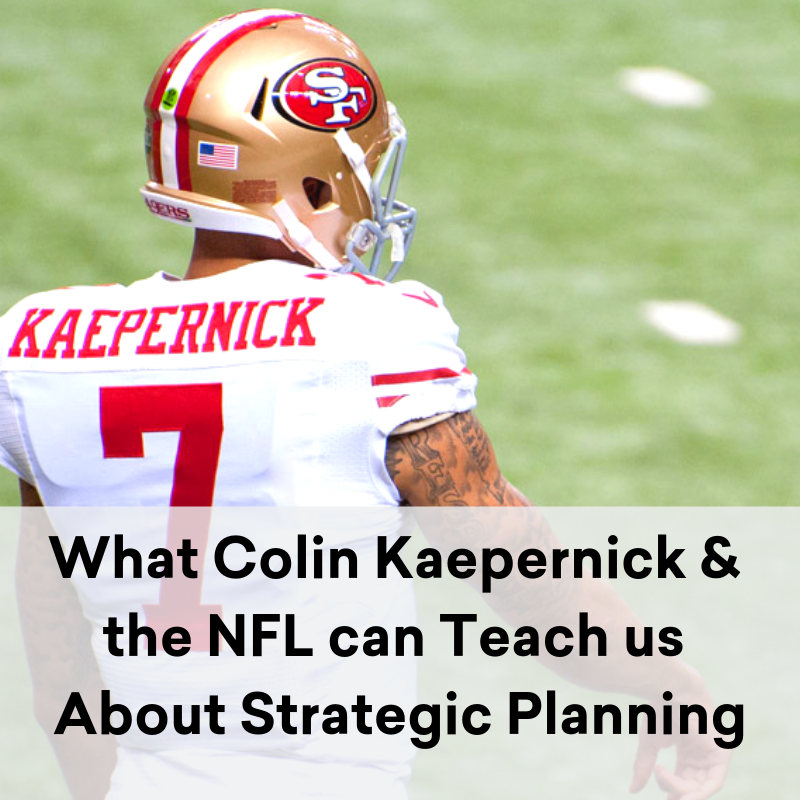Lessons from the NFL: What they can teach us about Strategic Planning and Community Engagement
It’s no surprise that the NFL is going through some major changes, ones that are forcing the organization to think more consciously and critically not only about their bottom line, but also about who their key constituents are, both on and off the field. Although professional football players of color have long used their platforms as a way to bring attention to social justice issues, when Colin Kaepernick refused to stand during the national anthem in 2016 in protest to the treatment of African Americans and other minorities in this country, he brought to the surface a flood of controversial issues regarding, race, class, police brutality, and the commodification of black athletes. It’s fair to say that the NFL has been pretty tepid in their response to this issue, offering very little by way of making a statement that shows they understand what Kaepernick is really protesting. And quite frankly, when 70 percent of the league’s players and only 7 percent of head coaches are black, and 94 percent of franchise owners are white, now would be the perfect time for the league to gain insight on their strategic direction.[1]
Throughout any strategic planning process, we never promise our clients that it will be easy. In fact, we often warn them that the process will likely be uncomfortable as it deals with issues of race and class and that the information gathered may force them to grapple with key issues as they pertain to their work and the communities they serve. It is also our practice to encourage our clients to be intentional about the voices they include in the strategic planning process in order to ensure that all of their key constituents’ needs are heard and valued.
If we could do Strategic Planning for the NFL
For the NFL, this would mean making a decision to not only speak to franchise owners or head coaches about the direction of the organization. It would mean ensuring that the 1,187 black players in the league[2] are included in the process and have their voices heard. It would mean seeing them as actual human beings who have the right and ability to use their spheres of influence to bring attention to social justice issues, and most importantly, it would mean seeing them for who they are: black men who, despite their professional athlete status, still have to deal with the inequalities that come with being a minority in this country.
The Possibilities
There are middle of the road strategic plans, ones that encourage an organization to stay the course, and there are transformative plans, those that not only force an organization to move beyond the status quo but force them to really lean into their goals and strategies in a way that makes clear who and what the organization stands for.
Perhaps your organization is not at a turning point as pivotal as the NFL. But, it’s fair to say that as the political and social climate in this country change, it is important to constantly be thinking about how issues of race and class play a role within your organization. Look internally at your workforce, or externally, out into the communities you serve. What are they saying and how are you choosing to listen or not listen to their needs? How are you choosing to value their voices as you plan for the future of your organization?
[1] https://www.washingtonpost.com/news/posteverything/wp/2018/05/24/there-would-be-no-nfl-without-black-players-they-can-resist-the-anthem-policy/?utm_term=.3147ab326c54
[2] https://www.huffingtonpost.com/wade-davis-jr/a-numbers-game-making-an-nfl-roster_b_5731630.html

